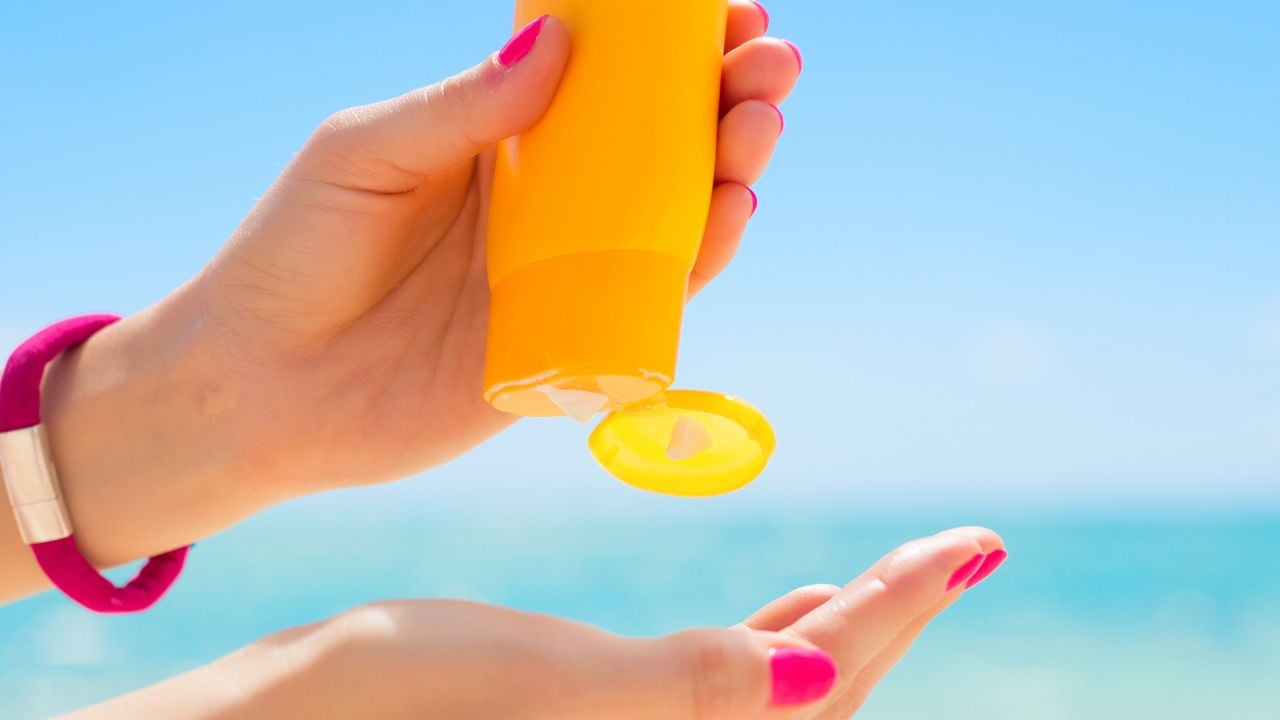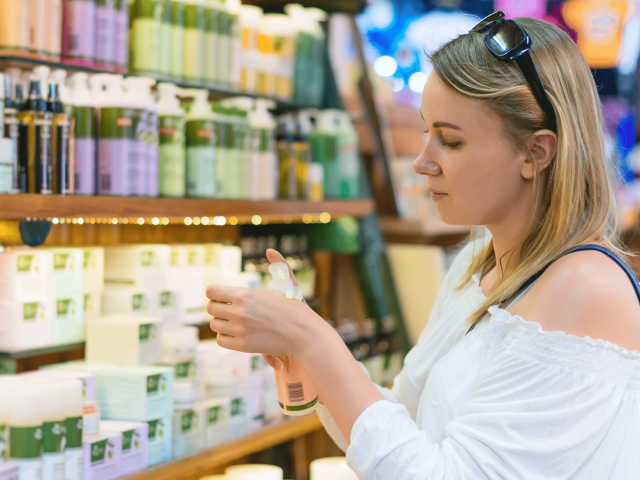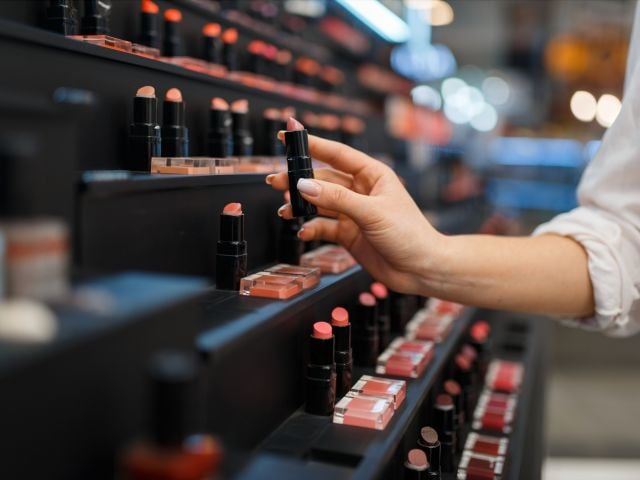
With Memorial Day weekend unofficially starting the summer, some people will be heading to the beach, others to a lake or a picnic. Whatever your plans, EWG has useful tips to help protect you from the sun’s harmful ultraviolet radiation.
EWG’s science team has assessed sunscreens and other products with sun protection factors, or SPF, for more than 16 years. This year, we found about 75 percent of more than 1,800 SPF products evaluated offer inferior sun protection or use worrisome ingredients.
When you shop for sunscreens, here are important points to keep in mind.
High SPF values and poor UVA/UVB balance
SPF refers to protection from ultraviolet B, or UVB, radiation, which causes the skin to turn red and burn. SPF values only reflect how well products protect against UVB rays.
Ultraviolet A, or UVA, rays are associated with skin cancer, including melanoma, as well as wrinkles and sagging skin.
Products with SPF values of 50 or above may give consumers a false sense of safety about sun exposure. A greater SPF does not guarantee better or longer-lasting protection from the sun, and many high SPF products offer weaker UVA protection. This false trust in products with high SPF can lead people to misuse sunscreens by exposing themselves to UV radiation for much longer than when using a lower SPF product.
The Food and Drug Administration has approved few sunscreen ingredients for UVA protection. Due to inadequate UVA standards, SPF products in the U.S. offer disproportionately low UVA protection compared to UVB, which is amplified in higher SPF products.
High SPF values also require greater concentrations of sun-filtering chemicals, some of which have been linked to tissue damage and hormone disruption.
The best sunscreen and SPF products protect against both UVA and UVB radiation. We advise consumers to stick with an SPF between 15 and 50.
Keep an eye out for ingredients
There are only two active sunscreen ingredients the FDA has proposed be classified as generally recognized as safe and effective – zinc oxide and titanium dioxide. The good news is more than 280 sunscreens meet EWG’s rigorous standards.
Oxybenzone
Watch out for this on sunscreen ingredient labels. In 2019, the FDA concluded that 12 active ingredients commonly found in sunscreens, including oxybenzone, needed additional safety data. FDA studies found that oxybenzone and the other non-mineral sunscreen ingredients are readily absorbed by the body after one use, and can be detected on the skin and in the blood weeks after the sunscreen was used.
Oxybenzone has been detected in the body of nearly every American tested. It’s known to be a skin sensitizer and is a potential endocrine disruptor.
Children are especially vulnerable to the chemical’s potential harms. Researchers found adolescent boys exposed to oxybenzone had lower testosterone levels, and female exposure is linked to an increased risk of endometriosis.
Fewer sunscreen products are now made with oxybenzone, but EWG still found it in 30 percent of the non-mineral sunscreens reviewed.
Retinyl palmitate and fragrance
Two other sunscreen ingredients, retinyl palmitate and fragrance, can also be harmful. Data from an FDA study suggests that application of the vitamin A derivative retinyl palmitate to skin and exposure to sunlight may speed the development of tumors and lesions.
The word “fragrance” or “parfum” on a product label often means an undisclosed mix of scent chemicals and ingredients used as fragrance dispersants. Fragrance mixtures have been linked to allergies, dermatitis, respiratory distress and reproductive system effects.
Avoid these two ingredients in sunscreens – and in other types of products in which they are also ingredients – whenever possible.
Spray sunscreens
Sunscreen sprays pose inhalation risks and, when applied outside in even a small breeze, may not coat the skin evenly or well enough to provide adequate skin protection.
When the FDA proposed that spray sunscreens be tested for inhalation deep into the lungs, three of the 14 sprays tested did not meet the agency’s proposed standards. The FDA has not yet finalized new test requirements for aerosol products.
Laboratory tests have also detected the carcinogen benzene in personal care products like sunscreens, and have found it at higher levels in aerosol products especially. But there are no requirements for a company to test products for benzene contamination, and the FDA can recommend only voluntary product recalls.
The Environmental Protection Agency classified benzene as a known human carcinogen for which there are no safe levels of human exposure.
EWG suggests skipping spray sunscreens entirely due to contamination, potentially inadequate protection and inhalation risks.
Misleading marketing claims
It’s easy to get confused by the marketing claims listed on sunscreen packaging. The FDA has banned a few, like “sunblock” and “waterproof,” but most have no legal definition, are not regulated by the FDA, and can be outright misleading.
There has been an uptick in products advertised as “reef safe,” an undefined claim. More research is needed about how sunscreen ingredients affect aquatic life such as coral, but one important new study in the journal Science explains how oxybenzone harms coral.
“Natural” is appealing on a product label, but it can refer to naturally occurring harmful ingredients, like formaldehyde. Words like “hypoallergenic” and “gentle” have no legal definition, and products with these claims may have ingredients that cause skin allergies.
Don’t get caught up in a company’s product claims. Read the ingredient lists instead. If you find it daunting to sift through complex ingredient lists, check out EWG’s Healthy Living App for ratings and safety information on sunscreens and other personal care products.
You can find more useful tips in EWG’s Guide to Sunscreens. Remember that sunscreen is only one sun protection tool and should never be your only line of defense. Proper sun protection includes additional measures, such as wearing protective clothing, wide-brimmed hats and sunglasses. Avoid the most harmful ultraviolet radiation, which usually peaks midday, between 10 a.m. and 4 p.m. If you can, find shade under a tree or pack an umbrella or canopy to make shade – an easy way to avoid sunburn and skin damage.
Stay safe in the sun as you enjoy the holiday this weekend.



